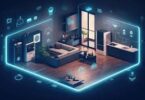How 5G Is Revolutionizing Communication and Connectivity
The rollout of 5G technology, the fifth generation of wireless networks, is ushering in a new era of communication and connectivity. Designed to be faster, more reliable, and capable of handling unprecedented amounts of data, 5G is set to revolutionize how individuals, businesses, and societies interact with technology. Here’s a comprehensive look at how 5G is transforming communication and connectivity:
1. Unparalleled Speed and Low Latency
- Faster Data Transfers: 5G offers speeds up to 100 times faster than 4G, enabling instant downloads and seamless streaming of high-definition content. This speed is critical for applications like cloud gaming and video conferencing.
- Ultra-Low Latency: With latency as low as 1 millisecond, 5G allows real-time interactions. This is vital for applications such as autonomous vehicles, remote surgeries, and augmented/virtual reality (AR/VR).
2. Enhanced Internet of Things (IoT)
- IoT Expansion: 5G can support a massive number of connected devices, from smart appliances and wearables to industrial sensors and smart cities.
- Improved Device Communication: Enhanced connectivity allows devices to interact more efficiently, making IoT systems smarter and more responsive.
3. Transforming Industries
- Healthcare: 5G enables telemedicine advancements, remote diagnostics, and even robotic-assisted surgeries performed in real time.
- Manufacturing: With 5G, factories can deploy automation, predictive maintenance, and real-time monitoring at an unprecedented scale.
- Agriculture: Smart farming tools using 5G connectivity help optimize water usage, monitor crops, and manage livestock more effectively.
4. Revolutionizing Media and Entertainment
- Immersive Experiences: 5G enhances AR, VR, and mixed reality experiences, enabling new forms of interactive media and gaming.
- Real-Time Streaming: Live events, sports, and concerts can be streamed in ultra-high definition with minimal lag, transforming audience experiences.
5. Smart Cities and Infrastructure
- Efficient Urban Management: 5G facilitates the deployment of smart city technologies, including traffic management, energy efficiency systems, and real-time public transportation updates.
- Public Safety: It enables better emergency response systems, smart surveillance, and disaster management tools.
6. Bridging the Connectivity Gap
- Improved Rural Connectivity: 5G’s ability to support Fixed Wireless Access (FWA) brings high-speed internet to remote areas, reducing the digital divide.
- Global Collaboration: With faster and more reliable connections, businesses and individuals can collaborate across borders more effectively.
7. Challenges and Considerations
- Infrastructure Requirements: Building a 5G network involves deploying thousands of small cell towers and upgrading existing infrastructure, which can be time-consuming and costly.
- Security Concerns: The broader attack surface in 5G networks raises cybersecurity challenges that require robust countermeasures.
- Energy Usage: While more efficient in data transfer, 5G networks and devices may initially consume more energy due to increased usage.
8. The Road Ahead
The global adoption of 5G is still underway, with countries rolling out networks at varying speeds. As more devices become 5G-compatible and infrastructure improves, the full potential of this transformative technology will become evident. By enabling a hyper-connected world, 5G is laying the foundation for innovations that will shape the future of technology and communication.
Conclusion
5G is more than just faster internet—it’s a revolutionary technology that connects people, devices, and systems in ways never before possible. From enhancing everyday experiences to driving industrial innovation, 5G is set to transform how we communicate, work, and live in a connected world.
Would you like to explore specific applications of 5G further?










Leave a Comment